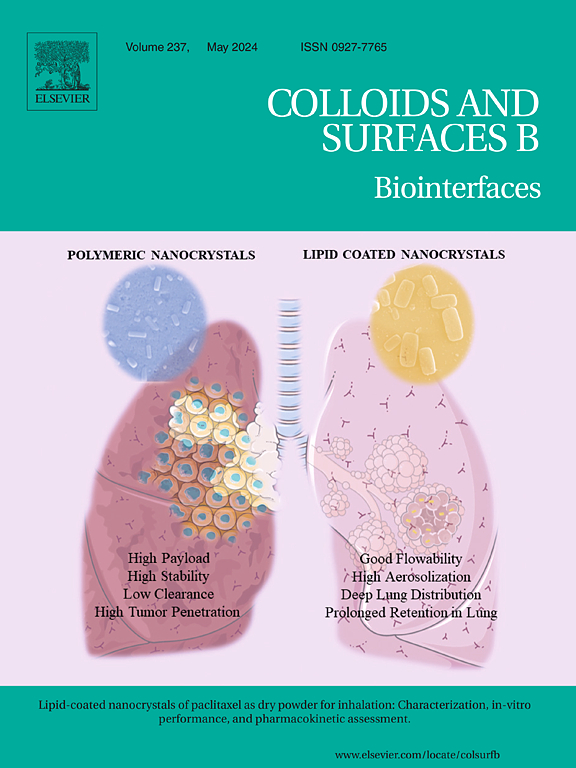3D-printed gelatin/dialdehyde starch hydrogels for hydrocortisone topical administration and in vivo treatment of atopic dermatitis
IF 5.4
2区 医学
Q1 BIOPHYSICS
引用次数: 0
Abstract
Atopic dermatitis (AD) is a chronic disorder affecting millions worldwide. Recent advancements suggest that combining therapies can significantly improve AD treatment outcomes and mitigate the challenges of long-term drug use, particularly with corticosteroids. In this study, we developed a 3D-printed hydrogel composed of gelatin (Gel) and dialdehyde starch (DAS), capable of encapsulating and delivering hydrocortisone (HC). DAS was synthesized via an oxidation reaction, introducing aldehyde groups that facilitated hydrogel formation with Gel through imine bond formation (Schiff base reaction). By adjusting the Gel/DAS ratio, we formulated inks with suitable rheological properties for extrusion-based 3D printing, an approach not yet fully exploited in this context. The resulting Gel/DAS network successfully encapsulated HC, as demonstrated by characterization analyses. The printed hydrogel exhibited a well-defined microstructure, significant water absorption and retention capabilities, and excellent stability. HC release followed a controlled mechanism consistent with Korsmeyer-Peppas kinetics. In an in vivo model, the 3D-printed hydrogel containing HC showed therapeutic efficacy comparable to conventional HC treatments in alleviating AD symptoms in mice. Additionally, the hydrogel significantly reduced myeloperoxidase (MPO) activity and increased non-protein thiol (NPSH) levels in the dorsal skin of DNCB-exposed mice, underscoring its therapeutic potential.
求助全文
约1分钟内获得全文
求助全文
来源期刊

Colloids and Surfaces B: Biointerfaces
生物-材料科学:生物材料
CiteScore
11.10
自引率
3.40%
发文量
730
审稿时长
42 days
期刊介绍:
Colloids and Surfaces B: Biointerfaces is an international journal devoted to fundamental and applied research on colloid and interfacial phenomena in relation to systems of biological origin, having particular relevance to the medical, pharmaceutical, biotechnological, food and cosmetic fields.
Submissions that: (1) deal solely with biological phenomena and do not describe the physico-chemical or colloid-chemical background and/or mechanism of the phenomena, and (2) deal solely with colloid/interfacial phenomena and do not have appropriate biological content or relevance, are outside the scope of the journal and will not be considered for publication.
The journal publishes regular research papers, reviews, short communications and invited perspective articles, called BioInterface Perspectives. The BioInterface Perspective provide researchers the opportunity to review their own work, as well as provide insight into the work of others that inspired and influenced the author. Regular articles should have a maximum total length of 6,000 words. In addition, a (combined) maximum of 8 normal-sized figures and/or tables is allowed (so for instance 3 tables and 5 figures). For multiple-panel figures each set of two panels equates to one figure. Short communications should not exceed half of the above. It is required to give on the article cover page a short statistical summary of the article listing the total number of words and tables/figures.
 求助内容:
求助内容: 应助结果提醒方式:
应助结果提醒方式:


